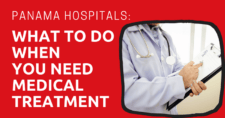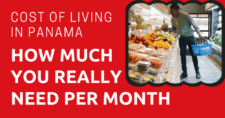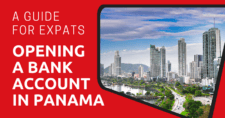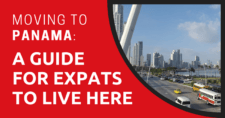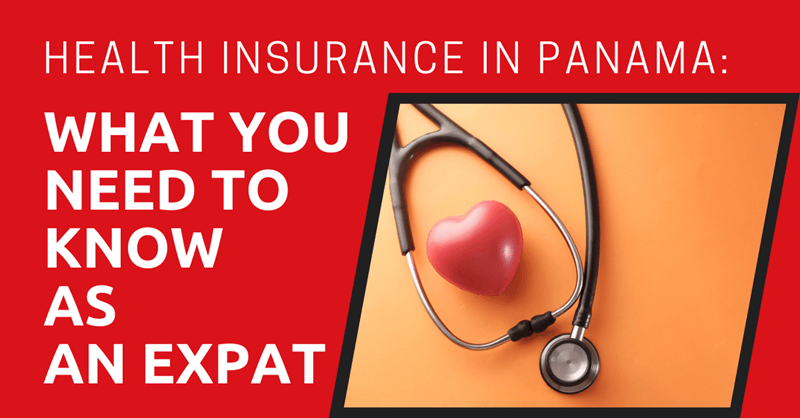
Panama has the best healthcare in Central America.
No matter where you decide to live in the country, you may want to purchase a health insurance plan to protect yourself in case of an emergency. Your options can be narrowed down to two types of health insurance: local and international plans.
In this article, I am going to teach you everything you need to know about health insurance in Panama: the reasons why it is necessary for expats, how the Panamanian healthcare system works, specific insurance providers that expats trust, and the steps to choose a plan that suits your needs.
This article will take approximately 25 minutes to read. Don't have the time right now? No worries. You can email the ad-free version of the article to yourself and read it later!
Disclaimer: This article may include links to products or services offered by ExpatDen’s partners, which give us commissions when you click on them. Although this may influence how they appear in the text, we only recommend solutions that we would use in your situation. Read more in our Advertising Disclosure.
Contents
- Do You Need Health Insurance in Panama?
- The Overview of the Panama Healthcare System
- MINSA
- Social Security
- Private Insurance
- How To Choose A Health Insurance Plan
- Best Local Health Insurance Plans
- Top International Health Insurance Plans
- Health Insurance Plans Comparison
- More About Private Health Care in Panama
- Availability of Health Care in Panama
Do You Need Health Insurance in Panama?
While healthcare in Panama is more affordable than in many countries, paying medical expenses out of pocket can be challenging.
There are different levels of healthcare in Panama. I will cover the specifics of the public and private systems later – for now, you just need to know that the prices of the two systems are very different.
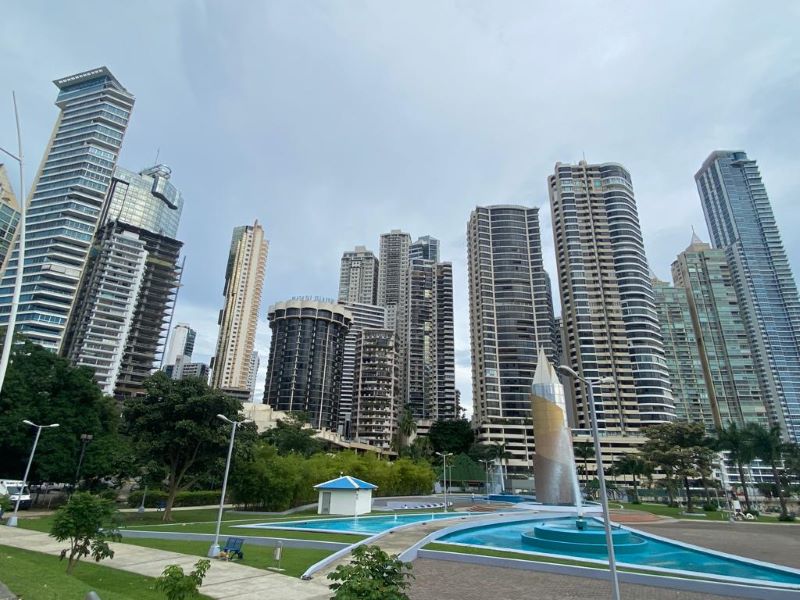
Without health insurance coverage, your healthcare options in Panama are limited by what you can afford to pay out of pocket.
Public clinics and hospitals are inexpensive, often charging US$5 or less for a consultation. Thus, many expats decide to use public clinics and pay out of pocket.
The public system, though affordable, offers lower-quality care and longer wait times than the private sector.
For these reasons, most expats prefer to use the private healthcare system.
The private sector is costly: a consultation with a specialist costs US$50 to US$70, and that’s before any additional charges.
Once lab tests, additional exams, and treatment are factored in, you could be looking at a bill of US$250 or more – which you must pay before leaving the facility.
Surgeries at private hospitals can be up to 70% less expensive in Panama compared to the United States, but still cost thousands of dollars.
Private health insurance plans in Panama are affordable, with local options ranging from US$50 to US$100 a month.
These plans give you access to the top private medical facilities in the country – which most expats cannot afford to pay out of pocket – plus special benefits like ambulance services, telemedicine, and discounts on prescription medications.
The Overview of the Panama Healthcare System
Before I discuss health insurance options for expats in Panama, it’s important to understand the healthcare system here, so that you can correctly choose an insurance plan.
The Panamanian healthcare system consists of two branches: public and private.
However, the public system can be further categorized into two systems: MINSA, which is run by the Ministry of Health, and social security, known as CSS.
The uniqueness of the Panamanian healthcare system is that each system has its own network of hospitals.
For example, if you want to use Social Security, you need to visit a hospital managed by CSS only.
Therefore, your health insurance options will mainly be based on the hospital you want to receive treatment from.
MINSA
The public healthcare sector is run by the Ministry of Health (MINSA) and operates 824 government-owned hospitals and clinics throughout all Panama’s provinces and comarcas (indigenous territories).
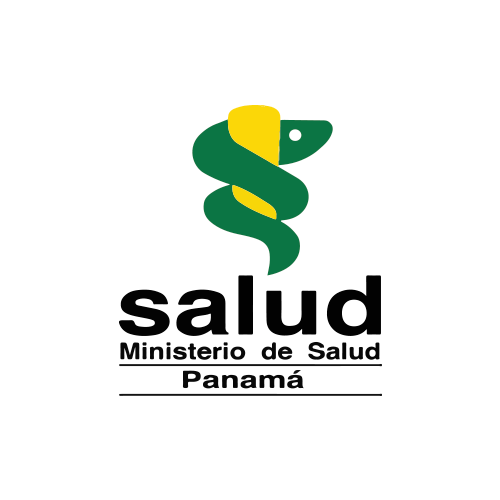
A few of the most well-known public hospitals in the country are Hospital Santo Tomás and Hospital del Niño in Panama City, Hospital Regional de Chiriquí in David, Hospital Regional Anita Moreno in Los Santos, and Hospital Gustavo Nelson Collado in Chitré.
You can view a map of MINSA clinic and hospital locations in Panama, along with their operating hours and available medical services, here.
Treatment Quality
The doctors and nurses who work in MINSA facilities are often the same ones who work in private hospitals and clinics.
That said, you get what you pay for. Government-run facilities are typically overcrowded, with long lines and hours-long wait times. Technology and supplies are often outdated, and shortages of medication and supplies sometimes occur.
Private rooms are nonexistent at public facilities, making a stay at a public hospital in Panama an uncomfortable experience.
Cost
Public clinics and hospitals are inexpensive, often charging US$5 or less for a consultation.
If you decide to use only public clinics and hospitals, you can simply pay out of pocket.
Should I Use It?
Now, if you have a minor health concern and are okay with a long queue, it can be worthwhile to visit a MINSA clinic.
The cost for the entire treatment can be less than the co-pay with an insurance plan at a private facility.
For example, about a month after moving to Panama, I came down with a double ear infection.
I decided to visit a public clinic and paid around US$10 total for a consultation, blood test, and a shot for the pain.
Adding the cost of the antibiotics from the pharmacy, I spent about US$20 that day. I likely would have been charged US$50 for the same service at a private clinic.
Here are a few tips to keep in mind if you visit a public facility:
- Arrive as early as possible. MINSA clinics typically open at 7 a.m., and the line forms quickly.
- Take your passport – it’s the only accepted form of ID.
- You will have to pay in cash – take more than you think you need.
- You won’t be allowed to enter if you’re wearing shorts, torn jeans, or a tank top.
Social Security
In Panama, the Social Security system is called the Caja de Seguro Social or CSS for short. It is a branch of the public health system that is funded by taxes.
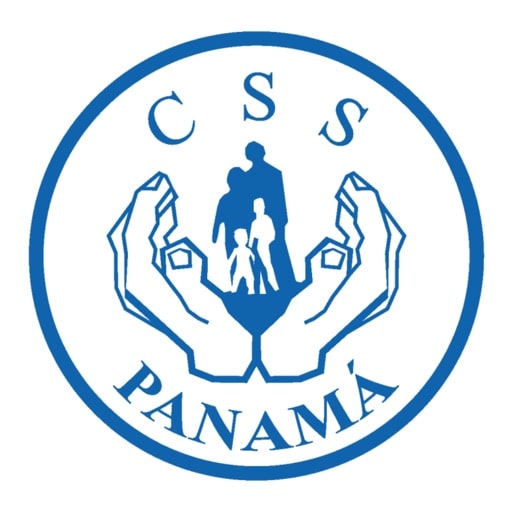
If you work for Panamanian companies, you will be automatically enrolled in Social Security.
Employees pay a percentage – typically around 9.75% – of their monthly salary to Social Security, and in exchange, they receive coverage at any facility within the program.
The Caja de Seguro Social manages 77 hospitals and clinics around the country. In terms of available services and quality of care, CSS facilities are practically identical to those run by MINSA. The only difference is that anyone can visit MINSA clinics and hospitals, while the CSS system is reserved for employees who contribute to the program.
How to Get It
If you work for a Panamanian company, you will be required to register with Social Security and pay taxes even if you don’t intend to use CSS health coverage.
If you have dependents, they will also be covered by the program.
Treatment Quality
National law requires doctors to work in both the private and CSS systems, so you will receive treatment from the same medical professionals at a Social Security clinic as you would at a private facility, but the level of care is not the same.
The CSS system is overwhelmed with far more patients than it can handle, leading to long wait times and overcrowding.
Coverage
Social Security health insurance provides 100% coverage for consultations, medications, emergencies, hospitalizations, preventive medicine, exams, surgeries, dentistry, and any other service offered by each clinic.
How to Use It
Once you have been enrolled in the program, CSS will issue you an ID.
With that document, you can receive medical care at any facility run by the Caja de Seguro Social (CSS).
Because you pay into the system every month, there are no co-pays or deductibles.
Private Insurance
In Panama, many expats opt to get private insurance, so they can access private healthcare without worrying about breaking the bank.
You have two main options when it comes to private health insurance: a local or an international policy.
Local Plans vs International Plans
International health insurance plans are designed with expats and digital nomads in mind. They have higher coverage limits than local plans due to the higher cost of healthcare in many countries and the additional services they offer.
They also offer benefits that local plans don’t typically have, like emergency medical evacuation, disaster services, and repatriation.
Local plans can be more limited in scope – focusing primarily on hospitalization and emergencies, while international options often have better coverage for services like preventive medicine, check-ups, vaccines, general wellness, physical therapy, elective surgeries, dental and vision, and mental healthcare.
International plans also offer coverage in multiple countries and access to doctors and facilities worldwide.
Because of this, international health insurance plans are more expensive than local plans.
You might choose an international plan over a local one if you want better coverage, take regular trips to other countries, and have a plan to move out of Panama in the future.
On the other hand, if you are on a budget, a local plan can be a good alternative.
Treatment Quality
Since you can access private facilities with private insurance, the treatment quality will be good.
Actually, hospitals in Panama are among the best in Latin America. Hospital facilities are good, and a majority of doctors here graduate or have experience working in the US.
In fact, because of the treatment quality, many people living in Panama only visit private facilities since they do not want to rely on public healthcare, which can be unreliable sometimes because of the number of patients.
Premiums
International health insurance plans have higher premiums than local plans.
Basic international health insurance plans start around US$100 to US$200 a month per individual.
On the other hand, local Panamanian plans often range from US$50 to US$100 a month per person.
How to Use It
Both types of health insurance plans are equally easy to use in Panama.
For local plans, you should visit hospitals within their network.
For international insurance, you may need to pay out-of-pocket first and then make a claim later for outpatient treatment. However, for hospitalization, the insurance company can pay directly to the hospital.
How To Choose A Health Insurance Plan
When it comes to choosing a health insurance plan, there are many things you need to consider.
Let’s take a look.
Determine Your Medical Needs
First things first, you should make a list of your health needs and those of any family members you want to include in your policy. Are there any pre-existing conditions, current health problems, or lifestyle risks? How old is each family member?
Most Panamanian and international insurance companies do not accept new clients who are 65 or older. Your pre-existing conditions will be excluded from the plan.
When comparing health insurance plans, make sure the details align with your medical priorities.
Different policies have different levels of coverage for specific health needs. Some plans focus on general healthcare, such as hospitalization, surgeries, and consultations.
Others cover specific areas like maternity care. If you or a family member has a long-term health condition, ensure the plan in question covers the necessary treatments and medications.
If you plan to have kids soon, choose a plan with excellent maternity coverage.
Insurance Network
Check that the policy has a wide network of providers in Panama and that it’s accepted at the best private medical facilities in the country.
If you want a Panamanian plan, choose a provider that offers a website and customer service by telephone in English – unless you feel comfortable communicating and reading in Spanish.
You can find out which insurance brands are accepted at each facility by visiting their websites and clicking on “aseguradoras”.
In the case of international plans, you won’t need to worry much about this part since you should be able to make a claim regardless of the hospitals you visit.
A Word About Ambulances
There are both public and private ambulances in Panama. The public ones are owned by the government and are unreliable – sometimes taking hours to arrive.
Most local and international health insurance plans provide private ambulance service, often with 100% coverage up to a certain amount.
Ensure the plan you’re considering includes this benefit. Private ambulances arrive quickly and are reliable.
Weighing Costs and Coverage
Study the costs of each health insurance plan – specifically premiums, deductibles, and co-pays. Premiums are monthly or annual fees, deductibles are the out-of-pocket amounts you must pay before the insurance kicks in, and co-pays are fixed amounts paid for services.
The goal is to find a balance between costs and coverage.
Don’t choose a plan just because it has a low monthly premium.
While it can be tempting to save money, you risk not having coverage for certain services when you need it.
On the flip side, if you choose an insurance policy that covers every condition and situation imaginable, you might end up paying for things you don’t really need.
Best Local Health Insurance Plans
If you opt for a Panamanian health insurance plan, it’s best to buy one directly from the provider. Insurance brokers – third-party companies that sell health insurance plans – charge hefty service fees.
You will end up paying more for the same health insurance plan if you get it from a source other than the insurance company.
Here are three of the local health insurance providers expats most often use in Panama.
MAPFRE
MAPFRE is one of the most popular health insurance providers in Panama. They offer both local and international plans.
MAPFRE plans are affordable. However, keep in mind that their plans come with a lifetime limit. This means once you make a big claim, you may need to change your insurance plans.

This company has the largest network of hospitals and clinics in the country, and their plans are accepted at Hospital Punta Pacífica, Hospital San Fernando, Hospital Paitilla, and The Panama Clinic.
The MAPFRE Panama website is in Spanish, but if you have questions, you can call or send an email to talk with an English-speaking customer service representative.
A local MAPFRE plan will cover you in Panama and throughout Central America.
One of their top plans is MAPFRE Solución Classic, which offers US$350,000 lifetime coverage.
It has a reasonable annual deductible of US$500.
With this plan, you will receive 100% coverage for emergencies, hospitalization, ambulance, outpatient surgery, and maternity. Other medical procedures like lab tests, X-rays, prescription medications, preventative medicine, and special exams are covered at 80% with affordable co-pays.
This plan covers physical therapy, occupational therapy, acupuncture, and mental health therapy at 100% (with annual limits and a combined lifetime limit of US$15,000).
The monthly premium for the Solución Classic plan increases with age, costing US$75 a month for a 30-34-year-old, and US$141 a month for a 50-54-year-old. To qualify for this plan, you must be under 65 years of age when you apply.
Solución Classic includes a special benefit called “Doctor in Minutes” – for a US$10 co-pay, a doctor will be sent to your home anytime.
You can read all the details of this plan here. Find out more about other MAPFRE plans here.
ASSA
ASSA health insurance is also widely accepted at private hospitals and clinics in Panama, including Hospital Punta Pacífica, Hospital San Fernando, Hospital Paitilla, and The Panama Clinic.
The company offers local and international plans, plus a network of 850 doctors and specialists in Panama and worldwide. It partners with 18 hospitals in Panama.
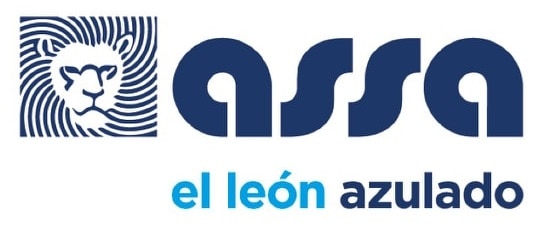
The ASSA MetroBlue Ultra Light is the most comprehensive local plan, with a renewable annual limit of US$300,000 or US$500,000 (you get to choose). The annual deductible is US$500.
This plan offers 100% coverage for hospitalization, emergencies, outpatient surgery, inpatient maternity, and ambulance service (up to US$300).
Lab tests, X-rays, prescription medications, respiratory therapy, organ transplants, and allergy tests and treatments are insured at 90%.
ASSA MetroBlue Ultra Light provides coverage in Panama, Central America, and Colombia. The age limit for applying for this plan is 55.
Monthly premiums start at US$71 for a 30-34-year-old, and US$127 for a 50-54-year-old.
ASSA health insurance plans include 24/7 phone and WhatsApp assistance, plus an option to add a benefit for home doctor visits.
Please note that the plan has an age limit of only 55 years old.
Find out more about ASSA MetroBlue Ultra Light here. Check out other available ASSA plans here.
Pan American Life
Pan American Life is one of the top insurance groups in the Americas. Their website is in both English and Spanish, making it convenient for expats.
In Panama, their Health Trust plan is accepted at the leading private medical centers, including Hospital Punta Pacífica, Centro Médico Paitilla, and The Panama Clinic.
Health Trust provides local and international coverage.
You have to choose one or the other. The annual renewable limit is US$500,000 and includes US$20,000 in life insurance protection. This plan offers 100% coverage for accident and critical illness emergencies, hospitalization, outpatient surgeries, preventative medicine, maternity, and cancer treatments.
Outpatient services carry a co-pay. Benefits include maternity coverage with an epidural and healthy newborn coverage up to US$10,000, 24-hour medical assistance, and telemedicine service.
To qualify for the Health Trust plan, you need to be between 18 and 65 years old and have legal residency in Panama. You can include dependent children up to 25 years of age on your plan. If you are 50 or above, you will be asked to take a medical exam for approval.
To learn more about Health Trust and Pan American Life’s other health insurance plans, go here.
Top International Health Insurance Plans
Popular health insurance companies like Blue Cross Blue Shield, Cigna, and Aetna sell plans that are accepted in Panama.
You may already have a plan with one of these providers; however, unless it’s an international or global policy, it won’t be accepted at Panamanian clinics or hospitals.
For example, I have an Aetna health insurance plan in the United States, but I can’t use it in Panama because it isn’t one of their international options.
The following international health insurance companies offer coverage in Panama and globally.
Cigna
Cigna international health insurance plans feature 24/7 access to multi-lingual customer service, a global network of 1.5 million hospitals and doctors, and medical care in over 200 countries and territories.
Options include plans for students, retirees, families, and professionals working abroad.
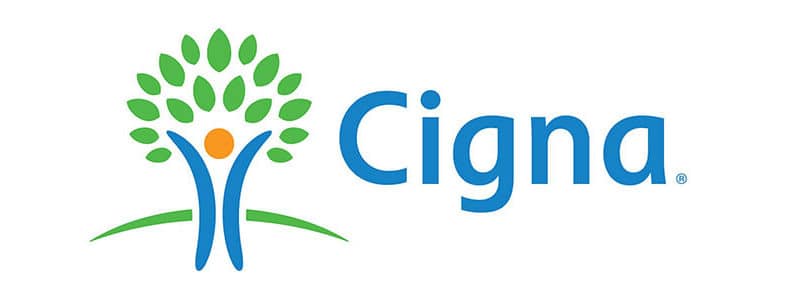
Cigna’s most complete international plan for expats is called Global Health. You can choose to include or exclude U.S. coverage. This plan also allows you to select up to four add-ons: international outpatient, international medical evacuation and crisis assistance, international health and wellbeing, and international vision and dental.
This plan has three tiers: silver, gold, and platinum. The number of benefits increases with each level. If you choose the silver tier, your annual limit will be US$1 million. You will benefit from 100% coverage for hospital charges; pandemics, epidemics, and outbreaks of infectious diseases; transplant services; local ambulance and air ambulance; and pediatric care. The plan also includes coverage or refunds up to a certain amount for accident and emergency room treatment, advanced medical imaging, rehabilitation, mental health care, and newborn care.
Cigna has a Global Telehealth app called Wellbeing that gives you unlimited video consultations for nonemergency health concerns.
The Global Health plan has several annual deductible options starting at US$375. You can view the full list, and other coverage and policy details here. Discover more about Cigna’s international health insurance plans here.
GeoBlue
GeoBlue is a U.S.-based international healthcare company that offers worldwide medical coverage. The GeoBlue Xplorer plan is accepted in Panama’s top private hospitals and offers coverage in Latin America, the Caribbean, and the United States. It has an unlimited limit.

What’s great about this plan is that it comes with up to 9-month coverage in the US. So, it’s a good option for US expats in Panama that need to travel back and forth between the USA and Panama.
The GeoBlue Xplorer plan includes 100% coverage for hospitalization, outpatient surgery, diagnostic tests, cancer treatment, emergency dental services, air and land emergency transportation, physical therapy, chiropractic therapy, and osteopathic therapy. The plan also includes coverage for maternity care and emergency evacuation.
There is a 20% co-pay for all medical services received in the United States.
Annual deductibles start at US$1,000.
Find out more about GeoBlue in our review here.
Health Insurance Plans Comparison
Here is a side-by-side comparison of the five health insurance plans I covered in this article.
This table should help you spot differences in cost, features, and areas of coverage, and guide you toward choosing the plan that’s best for your new life in Panama.
If you are interested in international policies only, check out our expat health insurance comparison.
(Note: Keep in mind that deductibles and premiums vary depending on your age and health needs. Contact each company directly for an accurate and personalized quote.)
| Health Insurance Plan | Provider | Coverage Area | Limit Type | Limit Amount | Deductible | Features | Monthly Premium (Example) |
| MAPFRE Solución Classic | MAPFRE | Local (Panama and Central America) | Lifetime | US$350,000 | US$500 | – 100% coverage for emergencies, hospitalization, ambulance, outpatient surgery, and maternity. – 80% coverage for lab tests, X-rays, prescription medications, preventative medicine, and special exams. – Additional coverage for therapy services. – “Doctor in Minutes” benefit for home visits at a US$10 co-pay. | US$55 (30-34 years); US$141 (50-54 years) |
| ASSA MetroBlue Ultra Light | ASSA | Local (Panama, Central America, Colombia) | Annual | US$500,000 | US$500 | – 100% coverage for hospitalization, emergencies, outpatient surgery, inpatient maternity, and ambulance service (up to US$300). – 90% coverage for lab tests, X-rays, prescription medications, respiratory therapy, organ transplants, and allergy tests and treatment. – Option to add a benefit for home doctor visits. | US$71 (30-34 years); US$127 (50-54 years) |
| Health Trust | Pan American Life | Local | Annual | US$500,000 | Not specified | – 100% coverage for accident and critical illness emergencies, hospitalization, outpatient surgeries, preventative medicine, maternity, and cancer treatments. – Maternity coverage with epidural and healthy newborn coverage. – 24-hour medical assistance and telemedicine service. | Contact agent for quote |
| Cigna Global Health | Cigna | International | Annual | US$1 million | Variable (starting at US$375) | – Tiered plan (silver, gold, platinum) with increasing benefits. – 100% coverage for hospital charges, pandemics, epidemics, outbreaks of infectious diseases, transplant services, local ambulance, air ambulance, pediatric care. – Options for add-ons including international outpatient, medical evacuation, health and wellbeing, vision, and dental. | Contact Cigna for details |
| GeoBlue | Bupa Global | International | Annual | Unlimited | US$1,000 – US$5,000 | – 100% coverage for hospitalization, outpatient surgery, diagnostic tests, cancer treatment, air and land emergency transportation – Coverage for maternity care, emergency evacuation. – up to 9 months coverage in the US. – 20% co-pay for services inside the United States. | Contact GeoBlue for details |
More About Private Health Care in Panama
The private healthcare system in Panama is one of the best in Latin America. Its hospitals and clinics are modern and technologically advanced, offering the latest treatments and procedures. Many of the doctors who work in Panama’s private medical facilities studied medicine in the United States and speak English.
Panama City is home to two private hospitals that have been recognized by the Joint Commission International for their world-class medical care. The first is Hospital Punta Pacífica, which is also affiliated with Johns Hopkins University in the United States. The second is Hospital San Fernando. Both are preferred hospitals for expats, thanks to the excellent, personalized service they offer.
Panama’s outstanding private hospitals have begun to draw international attention, and medical tourism to Panama is gaining momentum. People from the United States and other high-cost healthcare countries come to Panama for their healthcare needs, attracted by the expert care and lower prices.
Private medical facilities in Panama have private rooms, air conditioning, and almost zero wait times. Expats say that the level of care they receive in Panama’s private hospitals is equal to or better than the healthcare in their home country.
Several local and international health insurance companies offer plans that are accepted at Panama’s best private clinics and hospitals.
Availability of Health Care in Panama
Panama City offers a huge variety of healthcare services.
There are hundreds of modern, high-quality medical facilities, including hospitals, clinics, labs, pharmacies, dentists, optometrists, and specialists’ offices.
Many health centers have English-speaking doctors, nurses, and receptionists.
The four best hospitals in Panama City are the following (all are private):
- Hospital Punta Pacífica
- The Panama Clinic
- Hospital Paitilla
- Hospital San Fernando
Outside the capital, in the rest of the country called “the interior,” healthcare options are more limited. Popular expat destinations like Boquete, David, Chitré, and Coronado have private medical centers, but they are fewer in number and variety.
David, the second-largest city in Panama, is home to one of the top private hospitals in the country. Centro Médico Mae Lewis is the preferred hospital for expats living in Chiriquí province.
Once you leave the major cities, it can be difficult to find reliable healthcare. Most small towns only have one or two government-run clinics that may have unreliable hours, long lines, and are only equipped to handle basic medical procedures.
If you or a family member has a health condition or needs frequent medical care, it’s important to live close to Panama City, Boquete, Chitré, Coronado, or David. The good news is that most places where expats live are within an hour or two of those areas.


